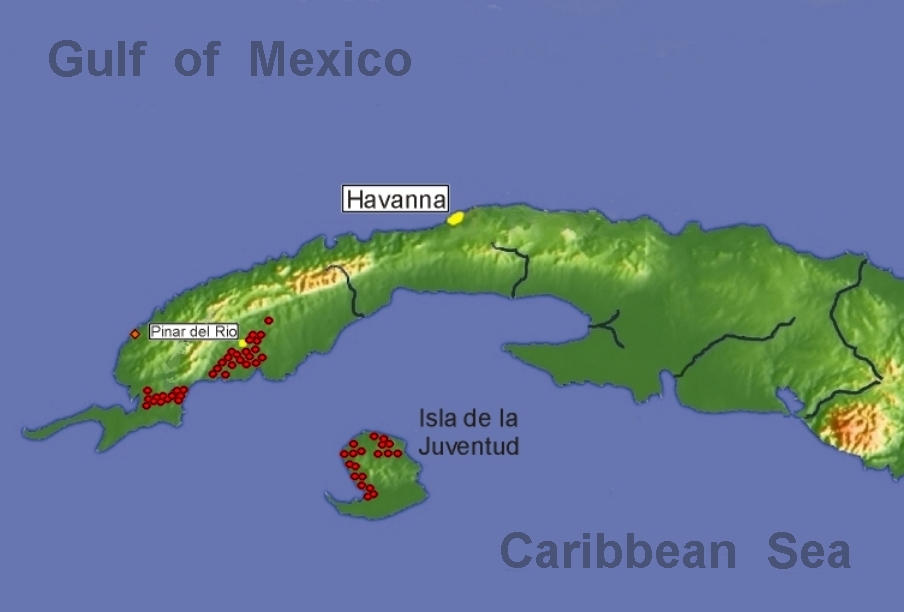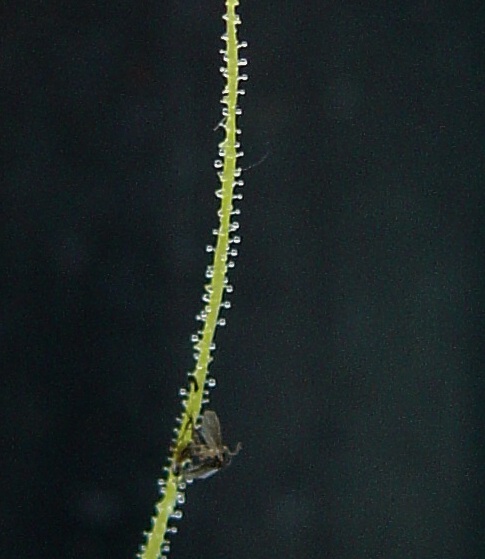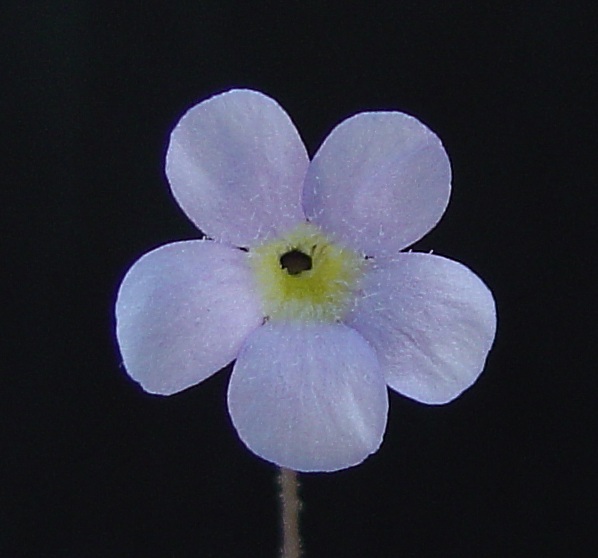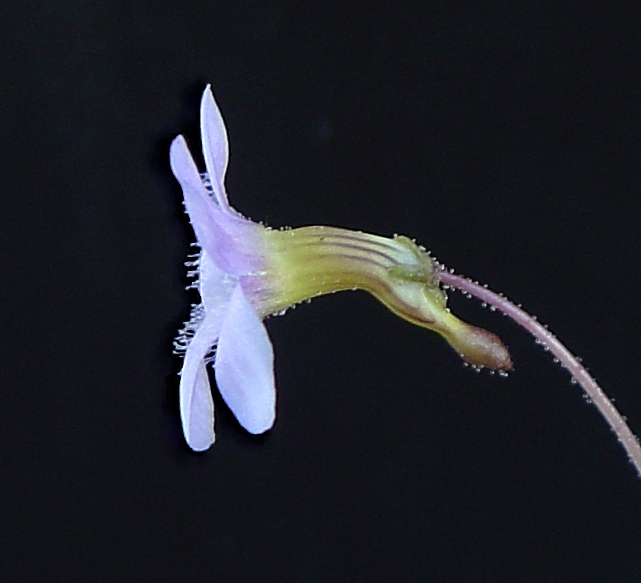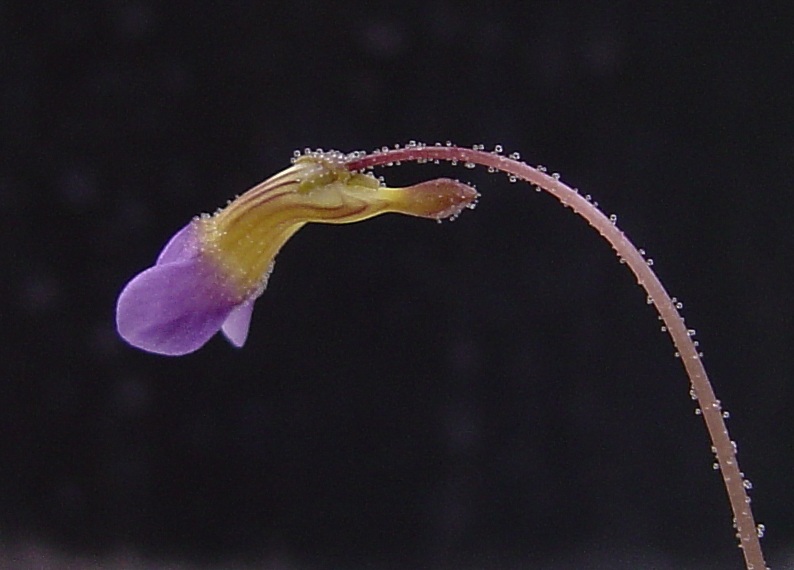
Oliver Gluch's World of Carnivorous Plants or: "What you always wanted to know about butterworts" |
| Impressum |

| Home | Origin | Prey | Species | Plant Purchase | Other Carnivorous Plants | Info about Carnivorous Plants | About me |
Pinguicula filifolia Wright ex Grisebach (1866)Topographic
map of western Cuba with the historic range of P.
filifolia ssp. filifolia (red dots) in the
"sabanas arenosas" located in the southern part of the
Pinar del Rio province an in the north of the Isla
de la Juventud (Youth island). Until present there is
only one site known for P. filifolia ssp. alba
located in the ecological preserve "Los Pretiles" in the
northwestern part of the Pinar del Rio province (orange
diamond). Nowadays there are only few sites in natural
preserves existing with larger numbers of populations.
Jungpflanze
von
P. filifolia ssp. alba (in Kultur). Die ersten
juvenilen Blätter sind spatelförmig und bilden eine
flach an den Boden angelegte Blattrosette. Erst danach
werden die typischen aufrechten, fadenförmigen
Blätter gebildet.
8th September 2018 Mehrere
adulte
Pflanzen von P. filifolia ssp. filifolia in
Blüte (in Kultur). Die fadenförmigen Blätter können bis
zu 20 cm lang werden.
Blatt von
P. filifolia ssp. filifolia mit gefangener Beute
(in Kultur). Das gesamte Blatt ist dicht mit
Drüsenhaaren besetzt.
24th September 2004 Frontansicht
einer
blaßvioletten Blüte (in Kultur). Die Petalen sind alle
gleich groß (isolob) und können spatelförmig bis
verkehrt-eirund sein.
24th September 2004 Seitenansicht
einer
Blüte (in Kultur). Die Kronröhre kann violett oder
gelblich gefärbt sein, ist leicht abgebogen und weist
meist eine violette Längsaderung auf.
24th September 2004 Seitenansicht
einer
sich öffnenden Blüte (in Kultur). Blütenkelch und
Blütenstiel sind nur spärlich mit Drüsenhaaren versehen.
Der Sporn der Blüte hat eine typisch verdickte Form und
ist meist rotbraun gefärbt.
24th September 2004 |
